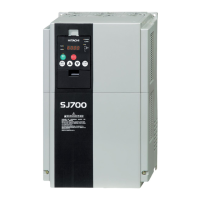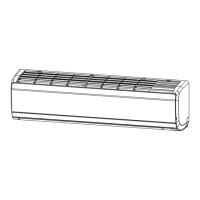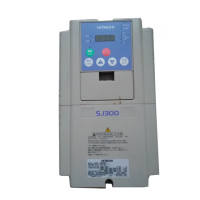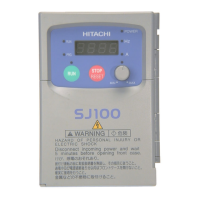Chapter 5 Instruction Words
5 - 16
Y ( ) or Yw (contact output) Instruction to access contact outputs
- Formats
Format Description
1 Y (ii)= <variable> or
<constant>
(ii = 00 to 07)
This instruction assigns <variable> or <constant> to the ii'th bit of
contact output data.
2 Yw= <variable> or <constant> This instruction assigns <variable> or <constant> as word data to
contact outputs.
- Explanation
This instruction writes <variable> or <contact> to contact output terminals Y (00) to X (05) in units of bits
or words to output the data. You can write and read data to and from <variable> or <contact>. You can
also fetch and store the status data of contact output terminals Y (00) to Y (05) in <variable>. Details of
the formats are explained below.
Format 1: With this format, the instruction outputs <variable> to the ii'th bit of contact output terminal.
(0 = off, 1 = on, 2 or more = off)
(Examples)
To turn terminal Y (00) off: Y (00)= 0
To turn terminal Y (01) on: Y (01)= 1
Format 2: With this format, the instruction outputs <variable> as word data to contact output terminals.
(Examples)
To turn terminal Y (00) on and turn terminals Y (01) to Y (05) off: Yw= 1
To turn terminals Y (00) to Y (04) off and turn terminal Y (05) on: Yw= U (00) (U (00) = 32)
Note: The setting of terminal active state (C031 to C036) is reflected in the polarity (on or off) of contact
inputs Y (00) to Y (05) and Yw when the data is output to intelligent output terminals 11 to 15 and
the relay output terminal. When creating a user program, consider the on and off states of actual
intelligent output terminals.
- Sample programs
Sample 1: Program to turn terminals Y (00) to Y (05) on sequentially while the output frequency is
increased in 10-Hz steps. (The inverter operation is the same as that programmed in sample 2.)
(Code area [Code Window])
entry
SET-Freq= 6000 : Set the output frequency to 60 Hz.
ACCEL= 3000 : Set the acceleration time to 30 seconds.
DECEL= 3000 : Set the deceleration time to 30 seconds.
Yw= 0
FW= 1 : Start forward rotation of the motor.
LOOP if FM < U(00) then LBL1 : When the output frequency is less than 10
Hz,
Y(00)= 1 : turn Y (00) on.
if FM < U(01) then LBL1 : When the output frequency is less than 20
Hz,
Y(01)= 1 : turn Y (01) on.
if FM < U(02) then LBL1 : When the output frequency is less than 30
Hz,
Y(02)= 1 : turn Y (02) on.
if FM < U(03) then LBL1 : When the output frequency is less than 40
Hz,
Y(03)= 1 : turn Y (03) on.
if FM < U(04) then LBL1 : When the output frequency is less than 50
Hz,
Y(04)= 1 : turn Y (04) on.
if FM < U(05) then LBL2 : When the output frequency is less than 60
Hz,
Y(05)= 1 : turn Y (05) on.
LBL1 goto LOOP

